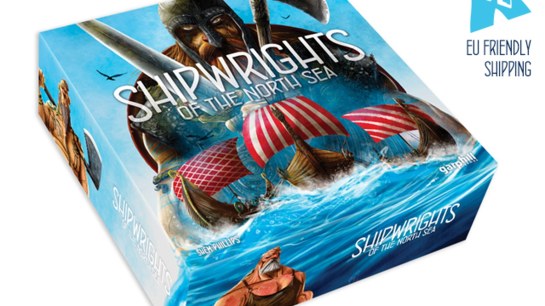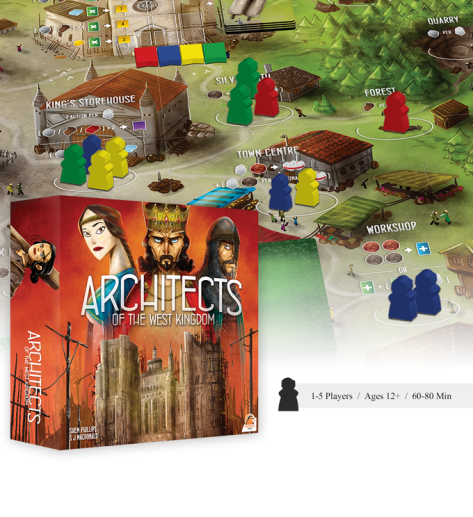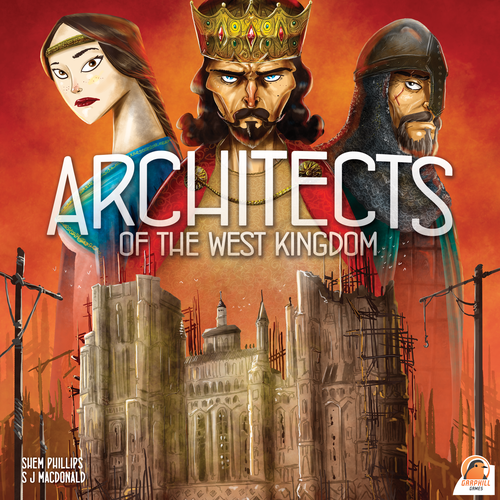Tell us a bit about yourself and your company Garphill
I’ve been designing games for around 11 years. Originally it started out as just a hobby. It wasn’t until Kickstarter became available in New Zealand in late 2013 that I was able to reach a greater market and lift the quality of my games.
Your first game, Shipwrights of the north sea was on KS back in 2014. What did you do to build up a following before the launch?
I got really lucky. For some reason, on the day I uploaded the first image of the Shipwrights player board to BGG, all other images disappeared from the front page. So there, all on its lonesome, was my picture for all to see. So that got a lot of attention leading into the Kickstarter. Shipwrights was also the first game with art from the now renowned, Mihajlo Dimitrievski (The Mico). That was another huge reason for the Kickstarter’s success.

How did the campaign go?
In my eyes, it was a huge success. I wasn’t expecting to sell more than 500 copies. This lead to me playing catch-up throughout most the campaign. Trying to create stretch goals on the fly and figure out how I was going to send 1300+ games around the world.
What was the biggest thing you learned from your fist campaign?
Shipping is expensive! I actually lost a lot of money in the end.
Then you released Raiders and some other games before you suddenly got a failed campaign for a game called Cibola & Woodlands. What happened?
Those games were older ones that I had previously only released in New Zealand. I had a few people requesting that I reprint them for a wider audience. The campaign didn’t fund, so I guess the demand wasn’t as high as I may have expected. They are both simple card games. Nothing overly groundbreaking from a gameplay point of view.They just weren’t the right fit for a Kickstarter release.
You have since then released other North sea games. How have you continued to work with your followers throughout the game series?
I always listen to what players are saying. Raiders, The Townsfolk Expansion and Runesaga were all designed based on what players were asking for.
Why do you think The North sea series was such a hit?
There’s a few key factors. Firstly, the art is amazing. Gritty, but still comical and fun. The games are also very accessible. I like to design games that don’t take long to teach, but hide a lot of depth within what seem like simple actions. The last reason is the trilogy-factor. As hobby gamers, we are often also avid collectors. So when someone discovers the third game in a series, they’re usually quick to research the older games.
What did you do to market your current game, Architects of the west kingdom?
It’s really just riding on the success of the North Sea trilogy. For early marketing, I often used the phase “A new saga begins…”. I was very intentional to let players know that this will be a new trilogy.

What is your main tip to handle the mid-campaign drop of new backers?
Keep engaged with your backers. Reveal content they haven’t seen yet – card art, for example. We also ran livestream playthroughs every 3-4 days. This was a huge success. It kept backers engaged and gave us something to talk about in updates.
What’s the best kickstarter advice you ever received?
As a content creator, stay humble and transparent.
What ́s your thoughts regarding stretch goals?
Personally, I think the age of stretch goals is coming to an end. At least for non-mini based games from established publishers. They are great for first time publishers, as you have no idea of the response you will get. They’re also great for companies like CMON, as they actually need the extra funds to cover the extremely high tooling costs. Non-mini games don’t need $10,000 to add two more cards. They will literally cost nothing extra to add into the game. To me, these are just fake stretch goals. I’ve done them in the past – most campaigns do them. But I think most backers now see them for what they are. To explain my reasoning more, I knew that Architects would race past $250k NZD, based on previous campaigns. I could have set the funding goal at $50k and added stretch goals every $10k. Instead, I decided to just back myself and have all planned stretch goals included from day one. This of course would lead to backers saying “Why shouldn’t I just wait to get it in retail?” It was anticipating that question that lead me to the idea of including a bunch of free promos with every copy of Architects purchased through Kickstarter. However, these aren’t exclusive. Customers should be able to find them at conventions, or for sale online. The benefit of backing through Kickstarter, is you get them all for free.
What do you think is the most important element of a Kickstarter page?
There are a lot of important elements. One that I feel gets missed a lot, is a full image displaying what the game will look like on the table.
Do you have any role models in the board gaming industry?
I have a lot of respect and adoration for companies like Roxley, Stonemaier and Druid City. They all seem to be trying new things and lifting game production and design to a new level.
Where can people reach you?
Be sure to check out Shem´s latest Kickstarter campaign for his new game here!

Yes, stretch goals as they are currently done (a couple of extra cards or UV finish or something) for most games seem hollow. I think Deluxe Kickstarter editions are here to stay though. Or cool add-ons or expansions. I have been surprised that Deluxe editions typically outsell base game editions. Sometimes 2-3x. It kind of makes the point that there is very little price sensitivity in the Kickstarter market. That still seems strange though.
LikeLike